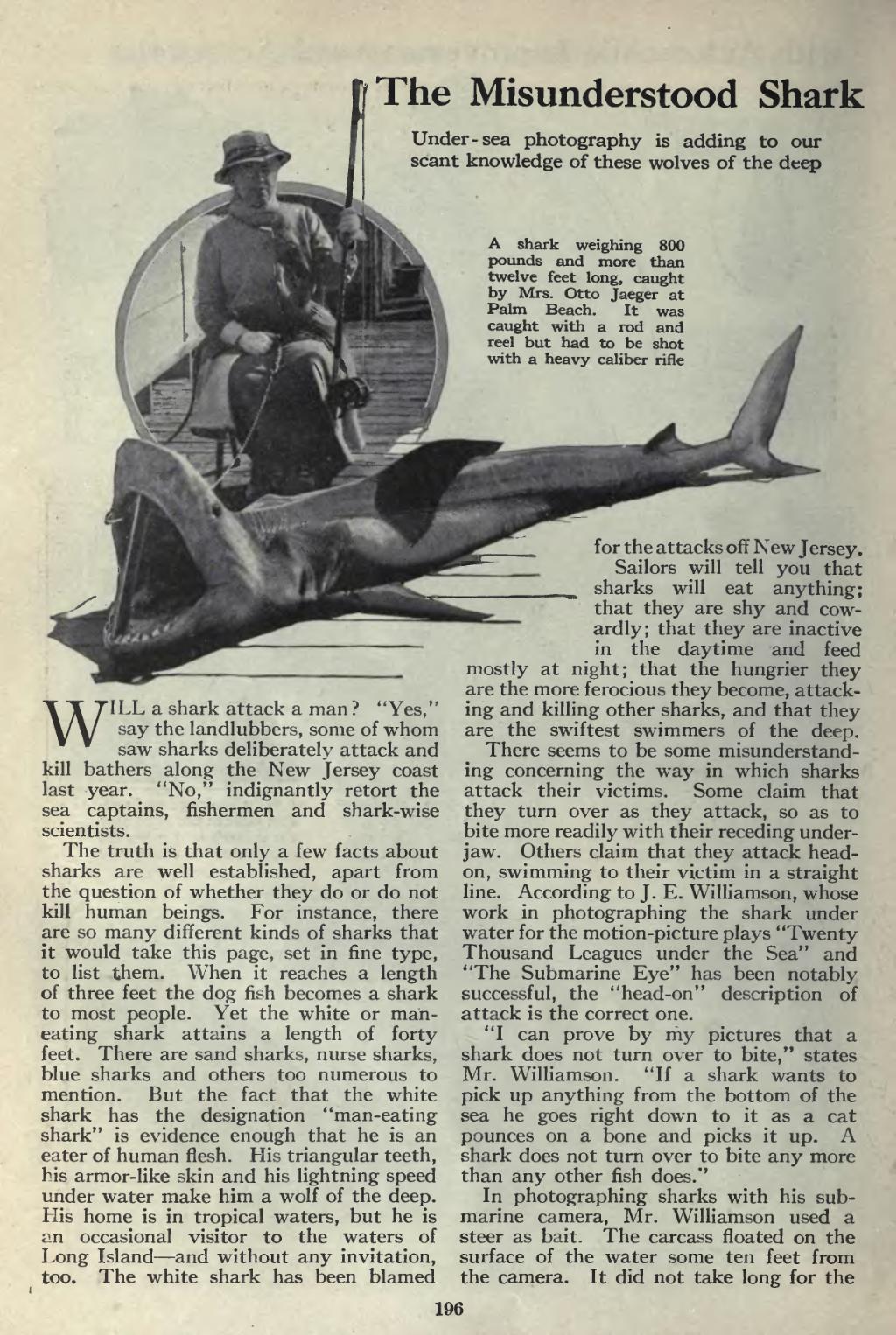The Misunderstood Shark
Under- sea photography is adding to our scant knowledge of these wolves of the deep
���WILL a shark attack a man? "Yes," say the landlubbers, some of whom saw sharks deliberately attack and kill bathers along the New Jersey coast last year. "No," indignantly retort the sea captains, fishermen and shark-wise scientists.
The truth is that only a few facts about sharks are well established, apart from the question of whether they do or do not kill human beings. For instance, there are so many different kinds of sharks that it would take this page, set in fine type, to list them. When it reaches a length of three feet the dog fish becomes a shark to most people. Yet the white or man- eating shark attains a length of forty feet. There are sand sharks, nurse sharks, blue sharks and others too numerous to mention. But the fact that the white shark has the designation "man-eating shark" is evidence enough that he is an eater of human flesh. His triangular teeth, his armor-like skin and his lightning speed under water make him a wolf of the deep. His home is in tropical waters, but he is an occasional visitor to the waters of Long Island — and without any invitation, too. The white shark has been blamed
��for the attacks off New Jersey. Sailors will tell you that sharks will eat anything; that they are shy and cow- ardly; that they are inactive in the daytime and feed mostly at night; that the hungrier they are the more ferocious they become, attack- ing and killing other sharks, and that they are the swiftest swimmers of the deep. There seems to be some misunderstand- ing concerning the way in which sharks attack their victims. Some claim that they turn over as they attack, so as to bite more readily with their receding under- jaw. Others claim that they attack head- on, swimming to their victim in a straight line. According to J. E. Williamson, whose work in photographing the shark under water for the motion-picture plays "Twenty Thousand Leagues under the Sea" and "The Submarine Eye" has been notably successful, the "head-on" description of attack is the correct one.
"I can prove by my pictures that a shark does not turn over to bite," states Mr. Williamson. "If a shark wants to pick up anything from the bottom of the sea he goes right down to it as a cat pounces on a bone and picks it up. A shark does not turn over to bite any more than any other fish does."
In photographing sharks with his sub- marine camera, Mr. Williamson used a steer as bait. The carcass floated on the surface of the water some ten feet from the camera. It did not take long for the
��196
�� �
